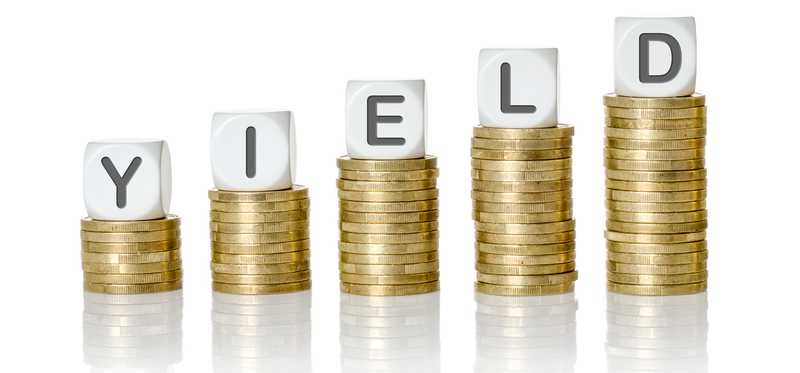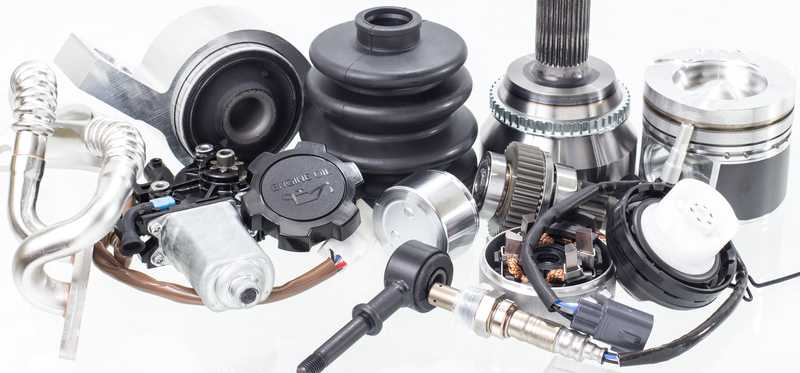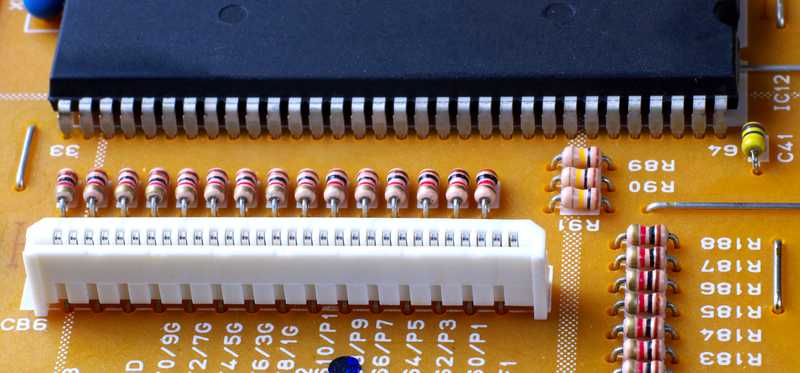These 20 Stocks Pay You to Own Them

These 20 Stocks Pay You to Own Them
Keep the dividend income flowing
Dividend paying stocks can be a great way to invest. When times are good, the dividend looks like icing on the cake that adds a little bit to your returns. When the market goes south, investors can continue to receive the cash as long as the company behind the stock continues to earn enough money to pay it. That provides cash for “buying low” without having to sell something already in your portfolio while it’s down.
Of course, the key risk involved is that dividends aren’t guaranteed payments, and when a company cuts its dividend, its share price typically falls as well. That makes it important to consider how well supported a company’s dividend is when looking to invest in companies that pay them. Keeping that balance in mind, here are 20 stocks that pay you to own them, along with some key reasons to believe many of them may be able to continue to keep those payments flowing.
Previous
Next

1. Genuine Parts (NYSE: GPC)
Best known as the company behind NAPA Auto Parts, Genuine Parts plays a key role in keeping people and businesses going. In addition to that well-known line, Genuine Parts also owns industrial parts supplier Motion Industries and office and industrial supply distributor SP Richards. In many respects, Genuine Parts is the type of company that can do okay even if the economy is slumping.
After all, older cars tend to need more replacement parts than new ones do, and people are less willing to buy new cars when they’re worried about their jobs or salaries. That ability to weather typical economic difficulties has enabled Genuine Parts to increase its dividend for 63 consecutive years. With a current yield of around 3% and a payout ratio of 55% of its earnings, Genuine Parts is providing its owners both a decent current yield and reason to believe it can reach 64 years of increases.
ALSO READ: Core Growth Creeps Along as Genuine Parts' Acquisitions Add Revenue
Previous
Next

2. PepsiCo (NASDAQ: PEP)
In addition to its well-known carbonated soda brands, PepsiCo also owns FritoLay snacks, Quaker (oatmeal/cereal/granola bars), and water brands like Aquafina and Propel. That diversification within the food business gives it some buffer against shifting consumer tastes. Thanks in part to that buffer, PepsiCo has been able to increase its dividend for 47 consecutive years.
With an annual dividend of $3.82 per share, PepsiCo offers investors a yield of around 2.8%. That yield is well covered, as it represents only around 43% of the company’s earnings. Analysts expect the company’s earnings to grow by around 4% annualized over the next five or so years. The combination of broad coverage in the food business, a reasonable payout ratio, and decent anticipated earnings growth gives good reason to believe PepsiCo can reach 48 years of increasing its payout.
Previous
Next

3. McDonald’s (NYSE: MCD)
The home of the Golden Arches, McDonald’s has increased its dividend every year since instituting the payments in 1976. While best known as a fast food titan, part of the secret to the company’s success is its focus on owning solid real estate financed by the sale of burgers and fries. The thing about real estate is that it takes a long term focus to really profit, and that long term focus has been key to the company’s sustained success.
McDonald’s rewards investors with a yield of around 2.6% and it does so while paying out around 60% of its earnings in the form of its dividend. With the company’s earnings expected to grow by around 5.6% annualized over the next five years, McDonald’s looks capable of continuing to pay and potentially extending its streak of dividend increases.
Previous
Next

4. Aflac (NYSE: AFL)
Perhaps best known for its spokesduck that hawks its supplemental insurance policies in the United States, Aflac also is the largest cancer insurance provider in Japan. Insurance is a business of statistics and risk management. As a result, as long as the company maintains discipline when setting rates, it has a very good chance its business will continue to provide decent returns for its shareholders.
Aflac sports a yield of around 2%, yet it only pays out around 26% of its earnings in the form of its dividend. As an insurance company, it does need to keep a substantial portion of its cash flow in reserve to protect itself against higher than expected claims. As a result, it is unlikely that its dividend will increase much faster than its earnings despite that low payout ratio. Still, the company has managed to raise its dividend for 37 consecutive years and looks likely capable of continuing the trend.
Previous
Next

5. Caterpillar (NYSE: CAT)
As a company deeply involved with the economically-sensitive industries of construction and heavy equipment, it might seem surprising to find Caterpillar on a list of strong dividend paying companies. Still Caterpillar has managed to pay a dividend quarterly since 1933 and has increased it for over a quarter century.
Caterpillar’s yield is around 2.8%, and it achieves that while only paying out around 35% of its earnings in the form of that dividend. The relatively modest payout ratio gives reason to believe it can maintain its dividend even if the global economy slows a bit. It also provides hope that Caterpillar may be able to continue its string of increases as long as the economy remains solid.
Previous
Next

6. JM Smucker (NYSE: SJM)
Well known for its namesake jams and jellies, JM Smucker’s food empire stretches well beyond those sweet treats. It sells Folgers and Dunkin’ Donuts branded coffees, Jif peanut butter, Carnation instant milk, and Meow Mix cat and Milk Bone dog foods, among many others. The company’s broad, staples-based food portfolio makes it well positioned to succeed almost regardless of what the economy is doing, but it also means its growth rate is quite often slow.
Still, for income seeking investors, JM Smucker can look reasonably attractive. It currently sports a yield around 3.4%, and its 72% payout ratio reflects its role as a fairly stable, mature company. With profits expected to grow around 3% annualized over the next five or so years, investors may continue to see its dividend modestly increase, continuing a trend that started 18 years ago.
Previous
Next

7. Walgreens Boots Alliance (NYSE: WBA)
When you’re sick and need your medication right now, not much beats your neighborhood drug store. Often, that means a trip to the local Walgreens, and the company’s role filling that vital need has enabled it to increase its dividend for 44 consecutive years. Despite the emerging threat of online competitors, Walgreens Boots Alliance is expected to post modest profit growth over the next five years, giving reason to believe it can continue that trend.
Investors get a yield of around 2.9%, and that dividend consumes around 41% of the company’s earnings. That’s a decent balance between dividends and cash retained by the company to reinvest in its future. Balance on this front is important, particularly as online competition continues to force Walgreens Boots Alliance to invest in new ways of operating to remain relevant.
Previous
Next

8. 3M (NYSE: MMM)
Post-it notes may be the best known consumer facing 3M brand, but the company makes tens of thousands of products across both consumer and industrial needs. One of the strongest engineering and applied sciences companies in the world, 3M’s continuous innovation sits at the core of how it has been able to thrive for generations, regardless of the economy.
Indeed, 3M has been able to pay a dividend for more than 100 consecutive years, and it has increased that dividend for 61 of those years in a row. 3M currently offers a yield of around 3.4%, and its payout of around two-thirds of its earnings reflects the fact that it has a broad swath of existing products that generate substantial cash. It retains the other third of its earnings to keep the innovation machine going, which gives reason to believe it can continue to extend its strong trend of increasing that payment.
Previous
Next

9. Texas Instruments (NASDAQ: TXN)
You may recognize Texas Instruments by the ubiquitous graphing calculators that are the bane of many high schoolers’ existence. In reality, the company’s suite of products stretches from outer space applications to lighting and medical products, with all sorts of other uses in between. Many of Texas Instruments’ products are used within other, better known products -- such as the circuits and designs underlying many video game controllers. That breadth of offerings gives the company great durability.
That durability has enabled it to increase its dividend for 16 consecutive years, even amid issues like trade wars that knock down its ability to grow fast. Texas Instruments offers investors a yield around 3%, and with around 57% of its earnings paid out as dividends, it looks capable of potentially continuing to increase that dividend as its earnings grow over time. Rocky times from the trade war may slow or even delay an increase, but over time, the company is committed to returning cash to its shareholders.
Previous
Next

10. Ryder System (NYSE: R)
Although transportation is a very cyclical business, Ryder System has managed to pay an uninterrupted dividend for over 43 years, and has managed to increase its dividend for the past 15 of them. A key reason for that is the fact that Ryder System goes beyond the standard business of shipping stuff around and actively helps manage various aspects of the transportation industry for others.
For instance, Ryder System offers truck fleet maintenance services to other transportation companies. When times are tough, transportation companies are less likely to buy new trucks and more likely to limp along the ones they already have. Since older trucks are more likely to need servicing than newer ones, that business line can provide something of a buffer for Ryder System’s operations in an otherwise down economy.
Ryder System offers investors a 4.2% yield, which is larger than most companies on this list, but its 89% payout ratio indicates that increases may be slower or farther between than in the recent past. Analysts are expecting stronger profits in 2020 than 2019 for the company, providing reason to believe it can at least maintain that dividend if not continue to increase it.
Previous
Next

11. C.H. Robinson Worldwide (NASDAQ: CHRW)
Another transportation company with a decent history of increasing its dividend, C.H. Robinson Worldwide is also not your typical trucking firm. A leading freight brokerage service, C.H. Robinson contracts with both shippers and carriers to move freight from point A to point B. As a brokerage, C.H. Robinson does not directly face the same level of capital and fleet maintenance costs that direct carriers do, giving it better maneuverability to lower its costs when the cycle turns sour.
As a result, C.H. Robinson has been able to increase its dividend at a fairly steady clip since the late 1990s, navigating both the dotcom crash and the financial meltdown. Investors get a yield around 2.6%, and with a payout ratio of around 42% of earnings, there’s a decent likelihood that dividend can at least be maintained, if not increased, as the business grows over time.
Previous
Next

12. Lockheed Martin (NYSE: LMT)
Regardless of the state of the overall economy, the United States tends to spend a lot of money on defense. That gives defense contractors like Lockheed Martin some level of fairly reliable revenue to enable it to pay dividends to its owners. Indeed, Lockheed Martin has been able to increase its dividend every year since 2003, despite things like the defense sequestration attempting to keep a cap on that type of government spending.
Lockheed Martin investors get a dividend yield of around 2.4%, and that yield consumes around 42% of the company’s earnings. With earnings expected to grow by around 13.5% annualized over the next five or so years, investors have a decent shot of seeing that dividend continuing to increase. Of course, it’s possible that a permanent state of peace breaks out across the globe. In that case, the “peace dividend” elsewhere in a diversified investor’s portfolio should make up for losses in the defense sector.
Previous
Next

13. Union Pacific (NYSE: UNP)
In good economic times, the railroads benefit from an increase in goods getting transported across the country. In not so good economic times, the railroads tend to hold up better than many other transportation providers because it’s generally cheaper than trucking for long haul routes. In addition, since railroads tend to own their own infrastructure, they tend towards somewhat natural monopolies over their routes, helping them protect pricing better than trucks during a downturn.
Union Pacific traces its history back to 1862, with its first rails dating to 1865. That gives it over a century and a half of operating history, making it well versed in handling economic cycles. Indeed, it has been paying its investors dividends for 120 years, and in recent time periods, it has even occasionally increased its dividend more than once a year. Investors receive a yield of around 2.2%, and that dividend represents around 42% of the company’s earnings, giving reason to believe increases may keep coming.
Previous
Next

14. Cardinal Health (NYSE: CAH)
Cardinal Health prides itself on helping medical professionals lower the cost of delivering better healthcare. That’s a service that is especially appreciated in these days where healthcare costs are the primary barrier that most people have that keeps them from financial independence. If Cardinal Health can profit by helping keep health costs at least somewhat in check, then it can have a good chance at thriving no matter what the overall economy does.
Investors get a yield of around 3.5%, which requires the company to pay up a bit less than 40% of its anticipated 2020 earnings. Cardinal Health also has a strong history of increasing its dividend over time, giving reason to believe that trend can continue as long as it is successful in its mission.
Previous
Next

15. Archer Daniels Midland (NYSE: ADM)
You have to eat, and unless you’re actively working to avoid it, chances are good that something you eat has been touched one way or another by Archer Daniels Midland. Even in the relatively new, hot space of plant-based proteins, Archer Daniels Midland plays a key role behind the scenes of many of the players in that segment.
Archer Daniels Midland currently offers a yield of around 3.3% which consumes around two-thirds of the company’s earnings. The company sports 87 years of uninterrupted dividend payments, and it has increased that payment annually for over four decades. With a history like that in an industry so very vital to our modern existence, chances are strong that Archer Daniels Midland will be able to extend its streak of paying its owners a bit more.
Previous
Next

16. IBM (NYSE: IBM)
IBM may have had its fair share of troubles in recent years, but it’d be short sighted to count Big Blue out. The company is executing a return to growth strategy, and while many of its legacy businesses continue to struggle, its focused growth-oriented areas like Red Hat are showing signs of life. It takes time for a giant company to change direction without alienating its existing customer base, and IBM is managing its finances well throughout its transition.
Consider that despite the revenue slide, the company has been able to increase its dividend for 24 consecutive years. While that dividend does represent around 75% of the company’s earnings, IBM still has sufficient cash flow to pay down debt even while investing for its growth and paying its dividend. At recent prices, IBM’s dividend represents a yield of around 4.8%.
Previous
Next

17. Maxim Integrated Products (NASDAQ: MXIM)
A leader in integrated circuit design and manufacturing, Maxim Integrated Products makes a lot of the parts that go into your everyday electronic devices. While that position as a technology infrastructure provider means you may have never directly heard of the products it makes, chances are good that you have used a device that incorporates its parts. The ubiquity of its product lines means that it has been able to reliably raise -- or at least maintain -- its dividend going back to 2002.
Current investors get a yield of around 3.5%, which represents around two-thirds of the company’s earnings. The company last raised its dividend for its September 2019 payment, which means investors are likely to take home more cash in 2020 than they did in 2019, even if it merely maintains the payment in 2020.
Previous
Next

18. Air Products and Chemicals (NYSE: APD)
While the air you breathe may come for free, it also comes as a mixed set of gasses, not all of which are beneficial for your use. Just like your body needs to deal with the impurities in the air, so too do companies that use gasses in their processes. Air Products and Chemicals specializes in getting the right mix of gasses for whatever its customers’ needs are, whether that be medical, educational, or industrial.
Air Products and Chemicals consistently delivers with excellence, to the point where it increased its dividend for the 37th consecutive year this past January. Even with that string of increases, the dividend consumes less than 60% of the company’s earnings, giving reason to believe it can continue the trend. Investors get a yield of around 2%, which should get slightly better if the company does manage to deliver its 38th annual increase in 2020.
Previous
Next

19. Johnson & Johnson (NYSE: JNJ)
Healthcare titan Johnson & Johnson is facing a lot of headline risks these days. Between the opioid crisis, claims of asbestos in its talcum powder, and some unfortunate potential side effects of its antipsychotic medication Risperdal, the recent news relating to the company has not been all that favorable. Still, at least some of that risk stems from the fact that Johnson & Johnson has fairly deep pockets, and the same deep pockets that makes it a juicy target of lawsuits makes it an interesting potential investment.
Indeed, Johnson & Johnson earned more than $17 billion over the past 12 reported months, and it pays about 70% of those earnings to its shareholders in the form of its dividend. The company has increased its dividend for 57 consecutive years. Its operations remain strong enough that even with the recent lawsuit challenges, there is a decent chance it can continue those increases in the future.
Previous
Next

20. Enbridge (NYSE: ENB)
The largest energy infrastructure company in North America, Enbridge is in the business of moving oil and natural gas around from where it’s produced to where it’s consumed. As long as the demand for energy remains strong, Enbridge can profit from the movement of that energy, making it a pretty economically-resilient company. Indeed, the company has paid dividend for 64 consecutive years and had increased those dividends for 24 years in a row.
With a yield around 5.9% and a dividend that’s well covered by its operating cash flows, there’s a lot for dividend investors to like about the company. Note that Enbridge is a Canadian company, however, so its dividend for American investors will fluctuate in U.S. dollars based on the exchange rate. In addition, U.S.-based investors will pay a Canadian withholding tax on Enbridge dividends, unless they own the stock inside an IRA.
At the time of publication, Chuck Saletta owned shares of Aflac, Enbridge, J.M. Smucker, Ryder System, Texas Instruments, and Union Pacific and has the following options: short January 2021 $125 puts on Caterpillar, long January 2021 $125 calls on Caterpillar, short May 2020 $130 calls on Caterpillar, short May 2020 $100 puts on Caterpillar, short January 2021 $105 puts on IBM, long January 2021 $105 calls on IBM, short January 2021 $130 puts on IBM, short January 2021 $140 calls on IBM, long January 2020 $110 calls on J.M. Smucker, short January 2020 $110 puts on J.M. Smucker, short January 2020 $115 calls on J.M. Smucker, and short January 2020 $100 puts on J.M. Smucker. The Motley Fool owns shares of and recommends Enbridge. The Motley Fool owns shares of Texas Instruments. The Motley Fool is short shares of IBM. The Motley Fool recommends 3M, Aflac, C.H. Robinson Worldwide, Johnson & Johnson, and Union Pacific and recommends the following options: long January 2020 $200 calls on IBM, short January 2020 $200 puts on IBM, and short January 2020 $155 calls on IBM. The Motley Fool has a disclosure policy.
Previous
Next
Invest Smarter with The Motley Fool
Join Over Half a Million Premium Members Receiving…
- New Stock Picks Each Month
- Detailed Analysis of Companies
- Model Portfolios
- Live Streaming During Market Hours
- And Much More
READ MORE
HOW THE MOTLEY FOOL CAN HELP YOU
-
Premium Investing Guidance
Market beating stocks from our award-winning service
-
The Daily Upside Newsletter
Investment news and high-quality insights delivered straight to your inbox
-
Get Started Investing
You can do it. Successful investing in just a few steps
-
Win at Retirement
Secrets and strategies for the post-work life you want.
-
Find a Broker
Find the right brokerage account for you.
-
Listen to our Podcasts
Hear our experts take on stocks, the market, and how to invest.
Premium Investing Services
Invest better with The Motley Fool. Get stock recommendations, portfolio guidance, and more from The Motley Fool's premium services.